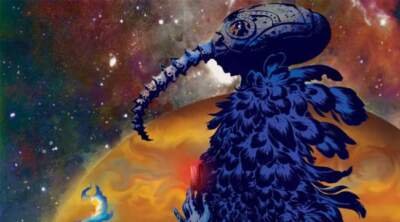The biblical adage that nothing is ever new under the sun seems especially true in comic books. This phenomenon is sometimes cast as express homages, sometimes as sneaky or blatant efforts to piggy-back on goodwill, and sometimes as part of the creative rush to tap into the prevailing zeitgeist.
“Vertical” (published in 2004) was the last of the special formatted releases to celebrate the tenth anniversary years of DC Comic’s imprint, Vertigo. It was written by Steven T. Seagle with art by Mike Allred. The text and the art pay homage to Andy Warhol, most obviously in the excerpt above. No doubt to mitigate risk under the Lanham Act for implying an endorsement of affiliation between the comic and Warhol’s personality rights, Warhol, as a character in the comic, is referred to only as “Andy”, but lives in a place called “The Factory”, has bright blonde hair, and is clearly regarded by the characters as a shaper of opinions and style. All of this describes Warhol the person.
Mike Allred’s engaging pop art style of drawing is showcased in the clothes and hairstyles of the characters. It also uses as a stylistic vehicle a comic book genre which hadn’t been in prominence since the 60s – the comic book love/romance genre.
The art is notably avant garde. Reading the story itself is also like looking at a roll of film – the scenes are in squares and each looks like a film frame.



